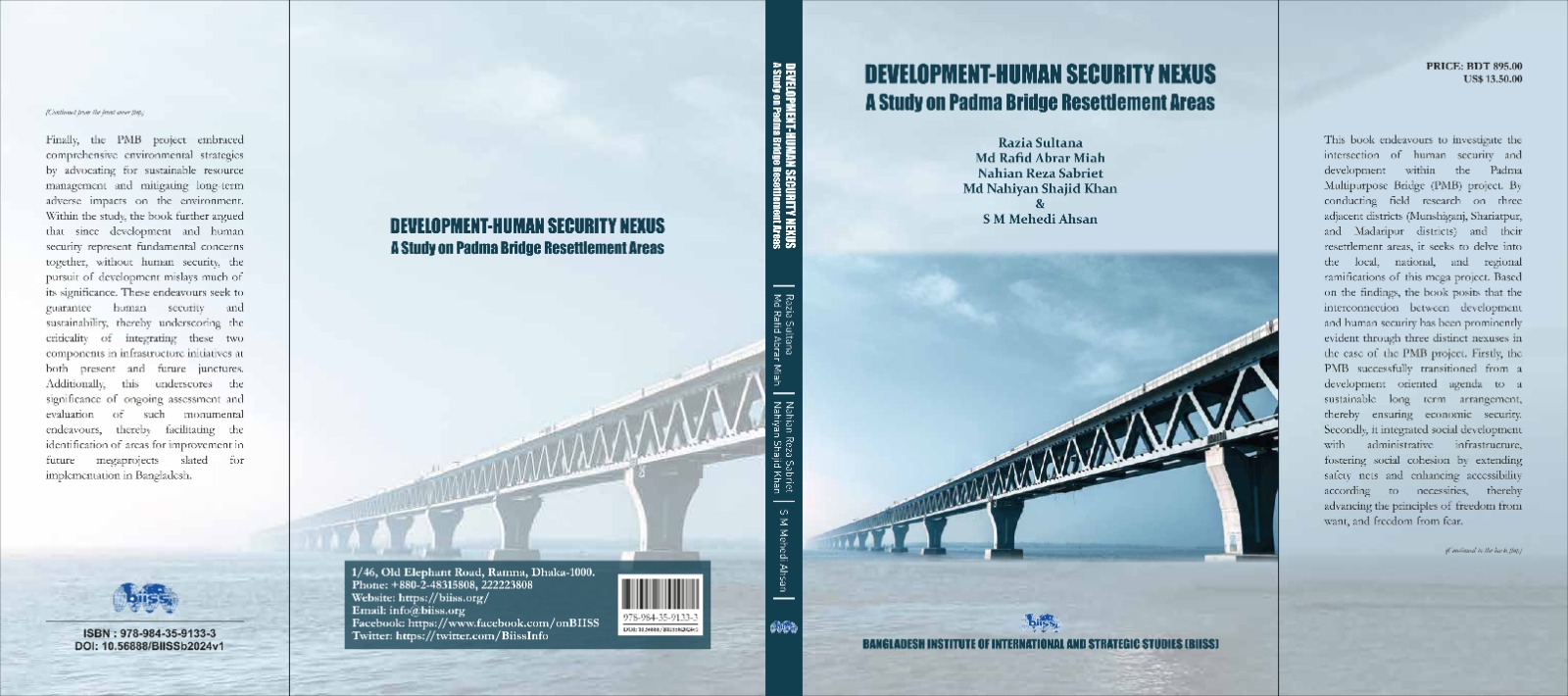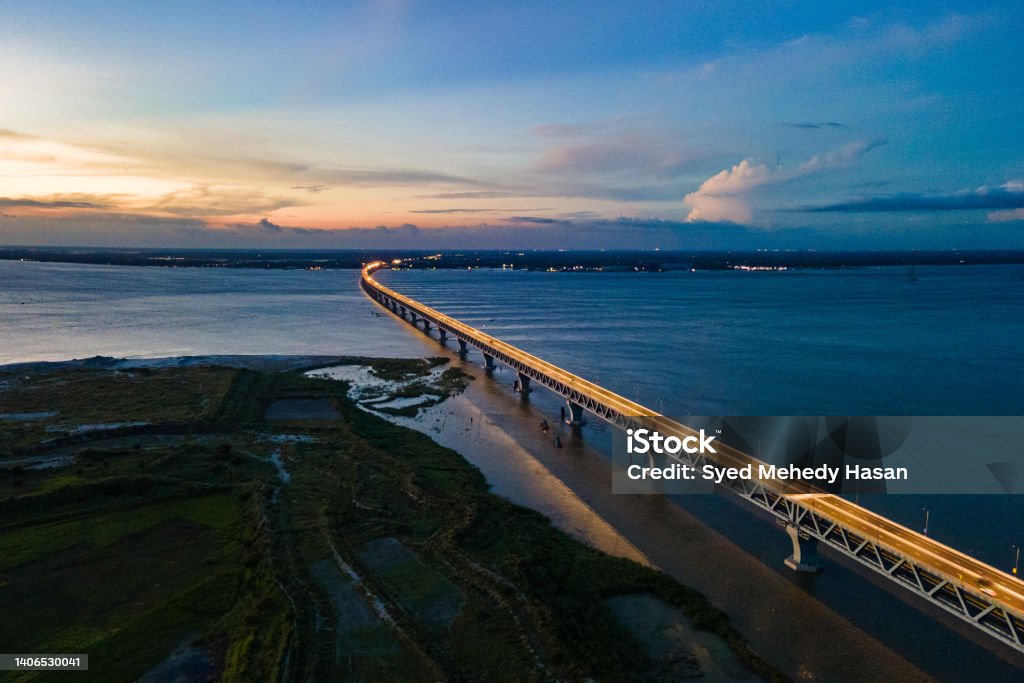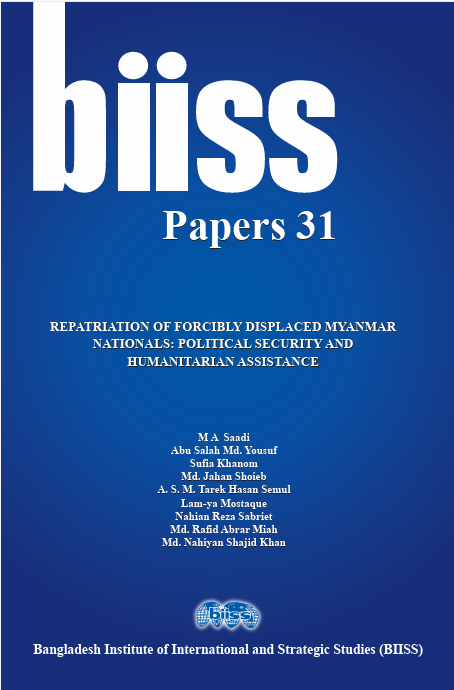The PMB is a project of immense importance, both regionally and globally. From a national perspective, it stands as a symbol of Bangladesh’s economic progress and capacity for self-funded large-scale infrastructure projects. Moreover, it plays a crucial role in enhancing the country's strategic positioning in regional politics by improving cross-border transit and connectivity, which in turn strengthens the nation’s bargaining power. The bridge also contributes significantly in enhancing security of the southern region of Bangladesh, facilitating military operations and ensuring the security of the Bay of Bengal. Notably, the Khulna division, including areas such as Khulna, Bagerhat, and Jashore, along with regions like Barisal, Pirojpur, and Bhola in the Barisal division, are experiencing direct benefits from the PMB. Similarly, the region of Dhaka division, encompassing Gopalganj, Faridpur, and Madaripur, among others, also directly benefits from the bridge's impact.
The monumental project not only highlights Bangladesh’s economic potential but also acts as a magnet for global investors seeking secure and lucrative ventures. The imminent enhancement of connectivity between Tamabil and Benapole is poised to unleash a tidal wave of trade activities, igniting economic dynamism and opening up new avenues for prosperity. Moreover, the launch of various ambitious development initiatives, including the Olympic Village, Bangabandhu Satellite City, and other strategic projects, is anticipated to unleash a wave of employment opportunities, fostering job creation and propelling the wheels of economic progress. It is also projected to herald the arrival of approximately 1 million job openings over the next five years, promising a significant boost to the labor force and generating a ripple effect throughout the economy. With the bridge’s transformative impact on regional communication and increased investment opportunities, there is an optimistic forecast of a steady annual decline in poverty rates by 1.01 percent, offering a glimmer of hope for improved living standards and economic inclusivity. Furthermore, economists foresee a substantial surge in the southern region’s GDP by 2.5 percent and an overall national GDP growth of 1.23 percent, underscoring the pivotal role of this infrastructure in catalysing economic expansion and regional development. Notably, the bridge is poised to serve as a catalyst for the exploration and extraction of marine resources, positioning Bangladesh at the forefront of the global maritime industry and enhancing its standing in the international economic landscape.
Therefore, economically, the Padma Bridge has far-reaching impacts, fostering foreign direct investment, promoting internal investment, and stimulating industrialization in the southern districts. It is expected to improve the agricultural sector by facilitating the transportation of agricultural products, reducing poverty, and boosting the region’s GDP. The bridge’s contribution to tourism, port facilities, and infrastructural development further emphasizes its economic significance. Diplomatically, the bridge represents a shift in Bangladesh’s development diplomacy, showcasing the country’s growing confidence and technical expertise in managing large-scale projects without relying on foreign aid. Its completion has not only enhanced the country’s morale and capacity but has also allowed for better management of climate change effects and the development diplomacy strategies. Additionally, the improved transportation provided by the bridge is set to revolutionize the health service system in the southern region, allowing for better access to critical healthcare facilities.
The Padma Bridge serves as a key component of the Trans-Asian Highway and the Asian Highway Route A-1, facilitating multimodal international transportation for the Indian subcontinent's Eastern Region. Additionally, it enhances internal connectivity in Bangladesh's southern portion, addressing the long-standing challenge of limited transportation across the nation’s numerous rivers. The bridge, spanning 6.15 kilometers (km), contributes to the region’s safety and stability. It fosters confidence for stakeholders involved in the Padma Bridge connectivity sector and aids in the management of the Bay of Bengal’s security, including anti-piracy operations and improved management of the Payra Port. Hence, research on the PMB is critical for understanding its economic, social, and environmental impacts, identifying and addressing potential challenges, and informing policy and decision-making actors. Specific research questions include: the bridge's economic impacts on the southwestern region of Bangladesh and the country as a whole, its social impacts on employment, education, and healthcare, its environmental impacts on water quality, biodiversity, and climate change, potential construction and operation challenges, and how to best manage the bridge to maximize its benefits and minimize its negative impacts. The PMB is a success and maximises its benefits for people from all corners. Besides, a study on the Bridge is crucial for identifying the areas of human security that have been improved through the implementation of the Bridge. Research on it contributes to enhancing the understanding of the comprehensive development and security landscape, highlighting the potential vulnerabilities and strengths that have been addressed by the Bridge’s presence. By delving into these multifaceted security and development dimensions, this book aims to offer valuable insights into the ways in which strategic infrastructure projects like the PMB can serve as catalyst for bolstering overall security and resilience within the region.
The book is divided into nine chapters. Chapter 1 introduces objectives, megaproject concepts, and a brief overview of the PMB while chapter 2 surveys global and local literature on megaprojects, highlighting their positive and negative aspects in Bangladesh while identifying research gaps. Chapter 3 examines the research methods, including data collection procedures and analysis techniques, and discusses location selection. Chapter 4 investigates how the PMB can enhance Bangladesh's economic growth through improved national connectivity, trade, and tourism. Chapter 5 assesses the PMB's effects on local communities, focusing on developmental challenges and implications for displaced populations. Chapter 6 underscores the need for sustainable planning by highlighting the potential environmental impacts of PMB development. Chapter 7 explores changes in human security related to the PMB, emphasizing various social dimensions and components of human security. Chapter 8 establishes connections between PMB development and human security, emphasising the importance of economic, social, and environmental security for regional sustainability. Finally, Chapter 9 provides policy insights and recommendations based on the PMB project’s experiences and successful strategies.
The book provides a comprehensive understanding of the PMB in Bangladesh. These chapters collectively contribute to the exploration of diverse aspects related to the Bridge, including its economic, social, and environmental impacts. Each chapter adds a layer of depth and insights, examining various dimensions such as the project's implications for regional development, its effects on local communities, and its potential environmental consequences. Furthermore, the chapters provide a detailed review of the existing literature, filling in critical gaps in knowledge and offering valuable context for the project's analysis. The inclusion of research methodologies and data analysis techniques ensures the study's methodological rigor, enhancing the credibility of the findings and conclusions. Overall, the chapters serve as essential building blocks for a comprehensive and informed assessment of the PMB project, providing valuable insights for policymakers, researchers, and stakeholders involved in similar large-scale development initiatives.
The comprehensive analysis of the PMB presented in this book serves as a cornerstone for understanding its multifaceted impacts on Bangladesh's economic, social, and environmental landscape. Through detailed examinations of various dimensions, including regional development, social implications, environmental sustainability, and human security, the book provides valuable insights for policymakers, researchers, and stakeholders. The integration of robust research methodologies and data analysis techniques ensures the study’s credibility and reliability, offering practical recommendations for policymakers and enriching the knowledge base for future infrastructure projects. As a result, this comprehensive exploration of the PMB contributes significantly to the advancement of scholarly discourse and informed decision-making in the realm of large-scale development initiatives.







